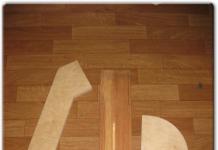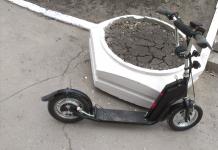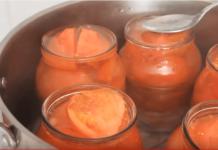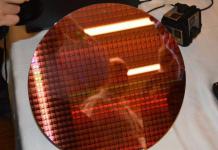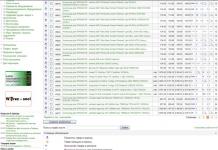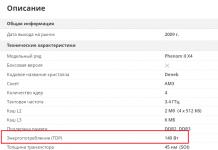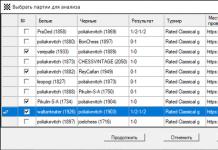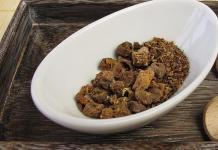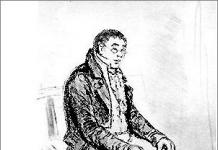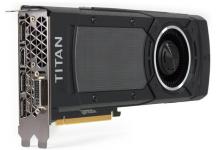The main relationships required to describe the operation of pneumatic devices are the relationships that describe the laws of air movement. It is assumed that air is an ideal liquid, i.e. such a liquid in which the particles are mixed with one another without friction. Let us assume that the motion is steady and the properties of the liquid in a given section remain constant, i.e. pressure and temperature do not change. Let us denote by c , p , g , ? , z , respectively, the fluid velocity, pressure, acceleration of gravity, fluid density and height above the reference plane. The Bernoulli equation in differential form, expressing the law of conservation of energy, is written in the form:
Integration of this equation gives an expression for the law of fluid motion:

The quantity H - the constant of integration, is the total head developed by the moving fluid. It is equal to the sum of the high-speed, piezometric and geometric heads. Given the low air density, the value z usually neglected. That's why.

For an ideal fluid, the energy reserve in each flow section remains unchanged. For real fluids with friction, the energy reserve decreases from section to section in the direction of flow. The equation for a real fluid between two arbitrary flow sections is:

Typically hydraulic losses H 12 are taken proportional to the change in kinetic energy, i.e.
where the value ? called the coefficient of hydraulic loss; with is the average speed in the flow section.
In the case of air outflow from a tank with a sufficiently large size (Figure 2), the air velocity in front of the hole can be neglected and then


Figure 2
The value is called the speed ratio.
In the channels of pneumatic resistances, the air flow rate is relatively high, and therefore, with a sufficient degree of accuracy, it can be assumed that there is no heat exchange between the flowing air and the channel walls and, therefore, the outflow occurs according to the adiabatic law. Therefore, you can write:

where k is the adiabatic exponent; ? , ? 1 - air density in different sections.

Mass air flow
where F - cross-sectional area А-А; ? 2 is the air density in section A-A.

In the resulting expression for the air density in the cross-section of the hole with an area F the density in the medium where the outflow occurs is taken.
In fact, the air density in this section is different. Alignment of the air density in the jet with the ambient air density occurs in section B-B, located at some distance from the hole. In this case, the cross-sectional area of B-B is less than the area of the hole F ... The ratio of the compressed section to the calculated one is called the compression ratio of the jet. The product of the compression ratio by the speed ratio is called the flow rate ? ... Thus, to refine the formula for determining the flow rate G m instead of ? Follows Figure 3

In practice, it is necessary to calculate the air flow rate not for a hole with thin walls, but for various types of throttling resistances having a more complex configuration.In these cases, the flow coefficient is determined experimentally, and it is a correction factor that takes into account the geometry of the throttle.
The flow rate (Figure 3) has a maximum value at

Adiabatic exponent k for air is 1.4, therefore, ? cr = 0,528.
Moment of equality ?=? cr corresponds to the air flow velocity equal to the sound velocity in the throttling resistance channel. It has been shown experimentally that if the pressure is further reduced R 2 , then consumption G m will not increase, but will remain constant. Therefore, in the case of a subcritical flow ( ?? ? cr ), use the formula

and in the case of a supercritical flow ( ? < ? cr ) - by the formula

To calculate the air flow, a simpler formula is often used
where, R i --pressure in the cavity up to the supply hole; R i -1 --pressure in the cavity behind the inlet opening; G cr - the critical value of the mass flow rate, determined by the formula
where d is the diameter of the inlet hole.
The maximum error with this determination of the flow rate is 3.4%.
In the design calculations and assembly of ventilation systems for residential premises, it is necessary to ensure a comfortable noise level for people to stay. The increased background noise negatively affects the psyche and health. At the same time, the effective operation of this system should correspond to the specified parameters in terms of volumes and frequency of air circulation and should not be energy-intensive.
In most cases, the required result in reducing the noise level when working with supply and exhaust ventilation systems is achieved by a reasonable selection of parameters and characteristics of key elements at the development stage.
When calculating ducts and connecting elements of the duct, it is important to start from the required volume of blown air without additional margin. Exceeding the optimal value of the amount of air for circulation will increase the flow velocity in the air duct elements and increase aerodynamic losses. To compensate for them, it will be necessary to increase the cross-sectional area of the duct channels, and this will entail unwanted expenditures on materials and complicate installation.
The configuration and internal dimensions of the complex of air ducts for ventilation are determined on the basis that the total resistance of all sections and elements of the network is equal to the pressure generated by the fan.
Relationship between the characteristics of ventilation systems and the noise level

The empirical formulas for calculating the noise level of the ventilation network include air flow, transverse dimensions of the duct, dimensionless quantities characterizing the quality of sound insulation of a room, as well as resistance values for flat and curved pipe sections.
Reducing the aerodynamic losses of the duct, widening the flow area and installing a fan with a lower air flow will save energy. The energy consumed by the fan directly depends on the air flow rate and pressure. It, in turn, is directly proportional to the air velocity in the duct.
By increasing the air speed, you can reduce the diameter of the duct section and save on the purchase of components and installation. The increase in speed is achieved by installing high-pressure fans. Having the same performance as low-pressure ones, they will consume more electricity and will be more expensive to operate.
The following permissible parameters of the ventilation system specifically affect the noise level:

- Air flow. Once the duct system is configured and dimensioned, the noise level can be reduced by reducing the flow rate.
- Sectional area of the duct. Increasing it produces a weaker noise exit from the ventilation openings.
- Drag coefficient. It is determined by the perfection of the shape of the transitional sections of the pipeline. The use of streamlined and smooth taps, diffusers and chokes can help achieve low operating noise.
- All of the above factors can be taken into account depending on the specific situation and the tasks set by the designer. A balanced and critical approach to the selection of all parameters, it will be possible to find a balanced solution for the design of future ventilation.
Back to the table of contents
Layout diagram and layout of ventilation ducts of the ventilation system
When assembling and placing the air handling unit, the following conditions must be observed:

- As you move away from the ventilation chamber or fan, the force of sound vibrations in the air ducts is damped. Therefore, it is more advisable to place it away from the quietest rooms.
- It is advisable to place throttling gears at the greatest possible distance from the room in question. After it, it will not hurt to put end mufflers or flexible inserts made of sound insulating materials.
- For ventilation ducts, the operating air flow rates are taken within the permissible limits, depending on the class, room volume and requirements for a safe noise background.
- In all sections of the ventilation network, the number of hydraulic losses is minimized, since the noise produced by the fan impeller is the greater, the greater the resistance is encountered on the path of the air masses.
- For high performance systems, the use of mufflers remains a prerequisite for quiet operation. The intended places for mufflers must be taken into account at the design stage.
- It is recommended to adjust the parameters of aerodynamics, low speed and adjust the operation of the ventilation system in parallel in order to achieve an acceptable noise volume while maintaining the required flow rates.
Back to the table of contents
Fan selection features
When choosing a fan, one must be guided by the following requirements:

- The device should have a minimum specific sound power level and a narrow spectrum of sound waves appropriate for the specified operating conditions.
- The fan power is selected in accordance with the total losses during air movement through the network channels.
- It is not recommended to use the impeller with the number of blades less than 12. Such configurations often create additional tones of aerodynamic noise when air passes through the impeller. The amplification of noise is determined by a separate fan device, the deviation of air masses when it hits the impeller and the further interaction of the flow with the inner surface of the air ducts.
- In networks where the flow rate is regulated, the effect of changes in aerodynamic characteristics on the volume of the fan is separately taken into account. Reducing the flow rate when changing the blade angle can significantly increase the noise generated.
- Additionally, the volume of the unit can be adjusted by lowering the speed of the impeller in the control range at a constant power.
- It is better to connect the fan connections and the connected sections of the air duct through flexible fittings that damp vibrations, which are transmitted by the unit body to the rest of the sections.
Back to the table of contents
In the design of quiet ventilation systems, in addition to the selection of devices with satisfactory noise characteristics, it is necessary to select favorable places for their installation.
In the building under development, fans are placed in specially designated soundproof rooms - in ventilation chambers. Cameras are placed separately from rooms with increased requirements for silence and a comfortable noise level. They are equipped far from elevator shafts, staircases, door and window openings.
Fans located on open tiers are mounted away from reflective surfaces, from corners, in places where insignificant penetration of noise into living and working premises, as well as to the outside of the building surrounding the building, is guaranteed.
The air duct outlets into the open space are supposed to be directed so that the noise is not directed towards residential buildings and recreation areas. The correct direction of sound from the operation of ventilation effectively helps in minimizing noise interference from ventilation systems of objects.
By properly positioning and aligning the ventilation outlet, you can achieve noise reduction to within acceptable limits at no additional cost.
ESSAY
Pneumatic devices play an important role in the mechanization of production. Recently, they have also been widely used in solving automation problems.
Pneumatic devices in automation systems perform the following functions:
Obtaining information about the state of the system using input elements (sensors);
Information processing with the help of logical and computational elements (processors);
Control of executive devices using distribution elements (power amplifiers);
Performing useful work with the help of executive devices (motors).
COMPRESSOR, PNEUMATIC CYLINDER, DISTRIBUTOR, EFFORT, SPEED, PRESSURE, FLOW, NOMOGRAM.
INTRODUCTION
Currently, more and more often a new branch of technology is used to automate production processes and individual operations - mechatronics, which includes a combination of mechanical, hydraulic, pneumatic, electronic elements. Recently, pneumatic automation has become widespread due to a number of significant advantages of pneumatic systems: easy control of actuators, a relatively high speed of working movement, etc. space, aviation, chemical, food, nuclear and other industries. Combining the well-known advantages of electrical communication and control with the speed and relative ease of powerful hydraulic and pneumatic drives, these systems are replacing purely mechanical and electrical control and monitoring systems.
Technological progress in the field of creating materials, methods of design and production contributes to improving the quality and increasing the variety of pneumatic devices, which served as the basis for expanding the field of their application as automation tools.
To implement rectilinear motion, pneumatic cylinders are often used, because they are characterized by low cost, ease of installation, simplicity and strength of the structure, as well as a wide range of basic parameters.
PNEUMATIC ACTUATORS
Pneumatic actuators are designed to convert compressed air energy into mechanical linear movement or rotation. They are used to set in motion the working bodies of machines, to perform various basic and auxiliary operations. Linear movement is provided by pneumatic cylinders, rotary movement - by actuators, which have a blade or a gear with a rack as a working element,
In single-acting pneumatic cylinders, the compressed air pressure acts on the piston in only one direction; in the opposite direction, the piston with the rod moves under the action of a spring or external forces. Spring-return pneumatic cylinders are used to perform small movements and with small developed forces, since the built-in spring, when compressed, significantly reduces the force developed by the piston.
In double-acting pneumatic cylinders, the movement of the piston with the rod under the action of compressed air occurs in the forward and reverse directions.
Rotary pneumatic motors can be piston and vane,
In addition to the types mentioned above, special-purpose pneumatic devices are also used in industry. These include rodless cylinders, positioning cylinders, pneumatic carriages, hollow rod cylinders with brakes and pneumatic grippers.
During the installation, commissioning and operation of pneumatic actuators, it is necessary to provide for a number of constructive safety measures.
The use of protective guards is recommended to minimize the risk of injury to personnel.
At a high speed of movement of the working element of the device or in the case of large inertial loads, the air motor's own damper may be insufficient to cushion the impact. To reduce the speed of the implement before turning on its own damper, it is recommended to use deceleration circuits or install an external damper to attenuate the shock. In the latter case, the structure must be sufficiently rigid.
In order to avoid personal injury, damage to equipment and production facilities, it is necessary to provide constructive measures to ensure compliance with safety in the event of a pressure drop. Such measures are especially necessary in systems with suspended loads and in hoisting machines.
If the pneumatic actuator is controlled by means of three-position pneumatic valves, in which all outputs are connected to the exhaust in the neutral position, or resumes operation after the pressure in the pneumatic system has been released, a sudden jerk of the working element from its place and then its movement at an excessively high speed is possible. This is due to the fact that high pressure is applied to one cavity of the cylinder, while there is no pressure in the other cavity, and there is no opposition to the movement of the piston, which usually occurs when air is displaced from the cavity of the pneumatic cylinder. In these cases, it is necessary to provide measures against sudden jerks - for example, using devices for smooth air supply.
All types of loads on the piston rod must be applied axially only. Unavoidable lateral loads applied to the rod end must not exceed the values allowed for each type of pneumatic cylinder. It is not recommended to use the pneumatic cylinder as a shock absorber.
If there is an air damper in the pneumatic cylinder, it can only work if the piston rod reaches its end position. Therefore, if the stroke length of the piston is determined by any external stops, it must be ensured that the damping is actually taking place.
If the pneumatic cylinder is to be operated with the air damper valve fully open, the type of cylinder fitted with a rubber damper must be selected. It is not recommended to operate the actuator with the damper adjusting screw fully screwed in, as this can damage the cylinder seal.
Before tightening the threaded connection at the end of the stem, it must be brought into the fully recessed position. The stem must not rotate when tightened.
When servicing the equipment, you must first of all make sure that no transported objects or equipment items that are in a raised or unstable position will fall as a result of a power outage. Only then can you turn off the electrical and pneumatic power supply, making sure that the pressure in the system is completely relieved.
1. Properties of air
Compressed air, which is a mixture of nitrogen and oxygen (about 78% and 21% by volume, respectively) and other gases contained in small quantities (argon, carbon dioxide, etc.), as well as water pair.
The main and most common parameters of compressed air are temperature, pressure and specific volume (or density).
Pressure is the force that acts normal to the surface of the body and per unit area of this surface.
The atmosphere of the Earth on its surface develops pressure in one physical atmosphere. The pressure measured in excess of the atmospheric pressure is called gauge or gauge and is indicated in the technical characteristics of pneumatic devices.
The total pressure is equal to the sum of the excess and atmospheric pressure:
The total gas pressure is proportional to its absolute temperature T and concentration of moleculesn , which can be defined as a relation;
where N - the number of molecules in the vessel; V - the volume of the vessel.
Pressure R gas is equal to:
![]() .
.
The proportionality coefficient is the Boltzmann constant equal to:
![]() .
.
More often known volume V the vessel and the mass m of the air contained in it. Under the assumption that air is an ideal gas (there is no intermolecular interaction), the pressure R inside the vessel can be determined by the Clapeyron formula:
 ,
,
where R - universal gas constant (for airR = 287 J / kg K), which is equal to the external work performed at constant pressure by one kilogram of air when it is heated by 1 degree; T -temperature in degrees Kelvin (absolute temperature).
Zero Celsius Temperature in Physics
![]() .
.
If the gas concentration in a vessel is zero, then the total pressure in such a vessel is also zero. It can be assumed that on the surface of the Earth, the vessel has some potential energy, since all the air surrounding it is under atmospheric pressure and, entering the vessel, can do work.
This is how many vacuum devices work, such as vacuum drives, suction cups, etc. These devices are said to operate under vacuum.
The vessel will also have potential energy if the gas pressure inside it is greater than atmospheric pressure (i.e.p and > 0). Here the gas can also do work, but already when it leaves the vessel into the atmosphere, i.e. to activate the pumping devices.
Since most devices of industrial electro-pneumatic automation work for injection, and the main pressure is significantly higher than atmospheric, it is convenient to use excess pressure when calculating the forces. Full pressure is used in thermodynamic calculations.
In the SI system, the unit of measure for pressure is the pascal (Pa). Pascal is equal to the pressure caused by a force of 1 N (newton), evenly distributed over a surface normal to it with an area of 1 m 2 (I Pa = 1 N / m 2).
Relationships between pressure units are shown in Table 2.
Table 2. Relationship between pressure units
|
Units |
kgf / cm 2 |
Bar |
Pa |
p si |
mmHg. |
|
1 kgf / cm 2 |
0,98 |
9,81 10 -4 |
14,22 |
735,6 |
|
|
1 bar |
1,02 |
10 5 |
14,5 |
750,3 |
|
|
1 Pa |
1.02 10 -5 |
10 -5 |
1,45 10 -4 |
7,5 10 -3 |
|
|
1 p si (lbf / sq in) |
0,07 |
0.07 |
6,9 10 -3 |
51,71 |
|
|
1 mm Hg |
1,36 10 -4 |
133,3 10 -3 |
133,3 |
19,34 10 -3 |
|
|
1 mm water column |
10 -4 |
9,81 10 -5 |
9,81 |
1,42 10 -3 |
7,36 10 -2 |
2. Basic thermodynamic laws
 In many cases, the equations of state for ideal gases in pneumatic automation can be used with sufficient accuracy for real gases.
In many cases, the equations of state for ideal gases in pneumatic automation can be used with sufficient accuracy for real gases.
Boyle in 1662 in England, and then independently of him by Mariotte in 1676 in France, it was established that if the gas occupied a certain initial volumeV 0 and had pressure p about ,then after compression to volumeV 1 his pressure p 1 , provided that the gas temperature does not change (isothermal process), will increase to a value at which the product of the initial volume and pressure will be equal to the product of the final volume and pressure (Figure 1, a);
![]() .
.
The French scientist J. Charles in 1787 found that if the gas occupies a constant volume (isochoric process), then with an increase or decrease in the initial temperature of the gas inside a constant volume, the initial pressure, respectively, will increase or decrease in proportion to the change in temperature (Figure 1, b ):
 ,
,
where
 .
.
At a constant pressure (isobaric process), heating or cooling of the initial volume of gas leads, respectively, to an increase or decrease in volume in proportion to the change in temperature in degrees Kelvin:
 .
.
This was established by J. Gay-Lussac in 1802.
In an adiabatic process, there is no heat transfer between the system and the environment. The process in a non-thermally insulated system can be considered approximately adiabatic if it is carried out so quickly that heat exchange between the system and the environment practically does not have time to occur. The adiabatic process is described by the equation
![]()
where k is the adiabatic index equal to the ratio of the heat capacity of the gas at constant pressure R to the heat capacity of the gas at constant volume V .
Isothermal, isobaric, isochoric and adiabatic processes are special cases of a polytropic process (from the Greek. Diverse). This process is described by the equation
![]()
where n - polytropic exponent: atn = k - the process is polytropic; atn =0 -
isobaric process; atn = 1-isothermal; atn = ±? -Isochoric.
3. Compressed air escaping through the hole
1
The main relationships required to describe the operation of pneumatic devices are the relationships that describe the laws of air movement. It is assumed that air is an ideal liquid, i.e. such a liquid in which the particles are mixed with one another without friction. Let us assume that the motion is steady and the properties of the liquid in a given section remain constant, i.e. pressure and temperature do not change. Let us denote byc , p , g , ? , z , respectively, the fluid velocity, pressure, acceleration of gravity, fluid density and height above the reference plane. The Bernoulli equation in differential form, expressing the law of conservation of energy, is written in the form:
 .
.
Integration of this equation gives an expression for the law of fluid motion:
 .
.
The quantity H - constant of integration, is a complete
the head developed by the moving fluid. It is equal to the sum of the high-speed, piezometric and geometric heads. Given the low air density, the valuez usually neglected. That's why.
 .
.
For an ideal fluid, the energy reserve in each flow section remains unchanged. For real fluids with friction, the energy reserve decreases from section to section in the direction of flow. The equation for a real fluid between two arbitrary flow sections is:
 .
.
Typically hydraulic losses H 12 are taken proportional to the change in kinetic energy, i.e.
![]() ,
,
where the value ? called the coefficient of hydraulic loss; with is the average speed in the flow section.
In the case of air outflow from a tank with a sufficiently large size (Figure 2), the air velocity in front of the hole can be neglected and then
 .
.

Figure 2
The value is called the speed ratio.
In the channels of pneumatic resistances, the air flow rate is relatively high, and therefore, with a sufficient degree of accuracy, it can be assumed that there is no heat exchange between the flowing air and the channel walls and, therefore, the outflow occurs according to the adiabatic law. Therefore, you can write:F -section area A-A; ? 2 - air density in section А-А.
 .
.
In the resulting expression for the air density in the cross-section of the hole with an areaF the density in the medium where the outflow occurs is taken.
In fact, the air density in this section is different. Alignment of the air density in the jet with the ambient air density occurs in section B-B, located at some distance from the hole. In this case, the cross-sectional area of B-B is less than the area of the holeF
... The ratio of the compressed section to the calculated one is called the compression ratio of the jet. The product of the compression ratio by the speed ratio is called the ratio expense ?
... Thus, to refine the formula for determining the flow rateG m
instead of ?
Follows Figure 3
expense ?
... Thus, to refine the formula for determining the flow rateG m
instead of ?
Follows Figure 3
to introduce ? .
In practice, it is necessary to calculate the air flow rate not for a hole with thin walls, but for various types of throttling resistances having a more complex configuration.In these cases, the flow coefficient is determined experimentally, and it is a correction factor that takes into account the geometry of the throttle.
The flow rate (Figure 3) has a maximum value at
 .
.
Adiabatic exponentk for air is 1.4, therefore, ? cr = 0,528.
Moment of equality ? =? cr corresponds to the air flow velocity equal to the sound velocity in the throttling resistance channel. It has been shown experimentally that if the pressure is further reduced p 2 , then consumptionG m -pressure in the cavity up to the supply hole; R i -1 -pressure in the cavity behind the inlet opening;G cr - the critical value of the mass flow rate, determined by the formula
![]() ,
,
where d - diameter of the inlet opening.
The maximum error with this determination of the flow rate is 3.4%.
Bibliography
1. Electro-pneumoautomatics in production processes: Textbook; edited by E.V. Pashkov. - 2nd edition, revised and enlarged. - Sevastopol: publishing house SevNTU, 2003.-496s., Ill.
2. Calculation of pneumatic drives: A reference guide. E.V. Hertz, G.V. Kreinin. - Moscow: "Mechanical Engineering", 1975. -274s.
Noise from flow inhomogeneity (Hz) is discrete, and the spectrum usually contains several components (harmonics):
f = m (nz / 60), (16)
where t is the number of the component (t = 1, 2, 3, ...); n is the rotation speed, rpm; z is the number of wheel blades.
The fight against noise from non-uniformity of the flow is carried out in the direction of improving the aerodynamic characteristics of machines.
In the spectra of noise turbomachines, for example fans, several areas can be distinguished (Fig. 44, a):
Rice. 44. Noise spectra of sources of aerodynamic origin:
a - fan; b - motorcycle engine; c - gas turbine power plant; 1, 2 - exhaust and intake noise; 3 - structure-borne noise; 4 - noise when cranking the engine
1) frequency range of mechanical noise (I), multiples of rev / s;
2) the area of noise from flow inhomogeneity (II with f1, f2, f, etc.);
3) area of vortex noise (III).
The sound power level of the fan noise (dB) depends on the total pressure H (kgf / m2) and the fan performance Q (m3 / s), as well as on the noise criterion m, which characterizes the noise level of this type of fans (m = 35-7-50 dB) :
LP = τ + 25 lgH + 10lgQ.
In internal combustion engines, the main sources of noise are exhaust and intake system noise, as well as noise emitted by the engine body.
Engine exhaust produces the most noise, the intensity and spectrum of which depends on the number of emissions per second, the duration of the exhaust, on the design of the exhaust system and on the engine power. The intake noise and structure-borne noise are lower in intensity than the exhaust noise (Fig. 44, b).
The engine noise spectra contain a significant number of discrete components that are multiples of the frequency f, which is equal to the number of emissions per second. For example, for a two-stroke engine fi = in \ 60, for a four-stroke engine fi = in (2 * 60) (i is the number of cylinders; n is the crankshaft rotation speed, rpm).
Compressors, blowers, pneumatic motors and other similar machines are characterized by intense aerodynamic noise.
Noise sources for compressor units are suction and exhaust (for air discharge) air ducts, compressor casings, walls of air ducts passing through the premises, escaping into the atmosphere.
Depending on the design of the compressor, its noise spectrum is different. Thus, the noise of reciprocating compressors is of a low frequency nature, due to the compression rate per second. The noise of turbochargers, on the contrary, is high-frequency, which is associated with the nature of the generated noise (vortex noise and noise from flow inhomogeneity).
Currently, gas turbine power plants (GTU) are widely used. By its nature, noise in a gas turbine unit is divided into noise of aerodynamic (gas-dynamic) and mechanical origin, and the aerodynamic noise emitted by the intake tract of the gas turbine plant is of the greatest importance. The main source of this noise is the compressor, during which the total noise levels reach 135-145 dB. The suction noise spectrum (Fig. 44, c) is dominated by high-frequency discrete components. The fundamental frequency of the first of them is determined by the formula (16).
Aerodynamic noise in the gas turbine source can be reduced by: increasing the gap between the blade cascades; selection of the optimal ratio of the numbers of guide and rotor blades; upgrading the flow path of compressors and turbines, etc.
Noise of mechanical origin (vibrations of the system of rotors, bearings, gearbox elements, etc.), which is prevalent in the engine room, can be attenuated by carrying out the measures discussed above for mechanical noise.
When bodies rotate, for example propellers of an airplane, the so-called rotation noise occurs. It is formed due to the fact that the body periodically generates pressure pulsations at each point of the medium, perceived as noise.
The main frequency of the rotor rotation noise with z blades, nppi of the rotation speed n (rpm) is determined by the formula (16). The frequencies of the remaining harmonics are multiples of this fundamental frequency, ie f2 = 22; f3 = 3f1 etc.
The sound power of the rotating noise also depends on the peripheral speed.
In various turbomachines (fans, compressors, etc.), the rotation noise is much lower in intensity than the vortex noise and the noise from inhomogeneity, and therefore may not be taken into account.
One of the most powerful sources of noise is a free jet (see Fig. 43, c). The noise of the jet is created as a result of turbulent mixing of air or gas particles with a high flow rate, with particles of the surrounding air, the speed of which is slower. These noises are predominant when operating jet engines, when compressed air or steam is released into the atmosphere.
The sound power of the jet (W) depends mainly on the outflow velocity vc, as well as on the diameter of the hole (nozzle) Dc and the density of air or gases p:
![]()
where k is the coefficient of similarity.
Reducing jet noise at a source is challenging. By reducing the velocity gradient in the jet, which is done, in particular, in bypass aircraft engines, a 5 dB noise reduction is achieved.
Installation of various nozzles at the nozzle exit, the action of which is based on transforming the noise spectrum (transferring the spectrum to the high-frequency region and even to ultrasound), reduces the noise by 8-12 dB. It should be noted that such nozzles can degrade jet performance due to high drag.
In streams moving at supersonic speed, aerodynamic noise occurs due to the appearance of shock waves (shock waves). When a body moves at supersonic speed, the phenomenon of sonic boom or pop occurs, for example, when flying supersonic aircraft. When gas escapes into the atmosphere at a supersonic speed, fluctuations of the jumps occur with the appearance of sharp discrete noise.
In most cases, measures to attenuate aerodynamic noise at the source are insufficient, therefore additional, and often the main noise reduction is achieved by soundproofing the source and installing silencers.
In pumps, the source of noise is liquid cavitation, which occurs at the surface of the blades at high peripheral speeds and insufficient suction pressure.
Measures to combat cavitation noise are to improve the hydrodynamic characteristics of pumps and select the optimal modes of their operation.
Electromagnetic noise. Electromagnetic noise occurs in electrical machines and equipment. The reason for this noise is mainly the interaction of ferromagnetic masses under the influence of time and space variable magnetic fields, as well as ponderomotive forces caused by the interaction of magnetic fields created by currents.
The reduction of electromagnetic noise is carried out by design changes in electrical machines, for example, by making beveled slots of the rotor armature. In transformers, it is necessary to use a denser compaction of packages, use damping materials.
During the operation of electrical machines, aerodynamic noise also occurs (as a result of the rotation of the rotor in a gas environment and the movement of air flows inside the machine) and mechanical noise caused by vibration of the machine due to the imbalance of the rotor, as well as from bearings and brush contact. A good lapping of the brushes can reduce noise by 8-10 dB.
Changing the directivity of noise emission. In some cases, the directivity index (PN) reaches 10-15 dB, which must be taken into account when designing installations with directional radiation, appropriately orienting these installations in relation to workplaces. For example, the exhaust of compressed air, the opening of the air intake shaft of a ventilation or compressor installation should be located so that the maximum of the radiated noise is directed in the opposite direction from the workplace or from a residential building.
Rational layout of enterprises and workshops, acoustic treatment of premises. As can be seen from expression (12), the noise at the workplace can be reduced by increasing the area S, which can be achieved by increasing the distance from the noise source to the design point.
The outflow of liquid through the hole can occur at constant and variable head. If the outflow of liquid through a hole occurs into the atmosphere or other gaseous medium, then such a hole is called not flooded... If the outflow goes below the level, and not into the atmosphere - flooded.
When a jet outflows into the atmosphere from a small hole in a thin wall, the shape of the jet changes along its length, called jet inversion ... This phenomenon is mainly due to the action of surface tension forces on the flowing curvilinear streams and various compression conditions along the perimeter of the hole. Inversion is most pronounced when flowing out of non-circular holes.
Figure - Jet inversion
Let us consider the outflow of liquid through a hole in a thin wall at a constant pressure. A hole in a thin wall is a hole whose diameter is at least 3 times the wall thickness, i.e. d o> 3δ.
When liquid flows out through a hole in a thin wall at some distance from the wall ( l = d o), the jet is compressed. The free area of the jet will be less than the area of the hole. This is due to the fact that the liquid particles entering the hole have velocities of different directions.
The jet breaks away from the wall at the edge of the hole and then compresses somewhat. The jet takes a cylindrical shape at a distance equal to approximately one hole diameter. The compression of the jet is due to the need for a smooth transition from various directions of fluid movement in the reservoir, including from radial movement along the wall, to the axial movement of the jet.
a- in atmosphere; b- under the liquid level
Figure - The outflow of liquid through a hole in a thin wall
The compression of the jet is characterized by the compression ratio - the ratio of the cross-sectional area of the jet in the place of greatest compression to the cross-section of the hole.
where S czh is the area of the free cross-section of the jet; S- hole area.
The compression ratio e is determined empirically and for round holes is 0.64.
The task of calculating the outflow of liquids is to determine the speed and flow rate during the outflow. The outflow rate is determined by the Bernoulli equation. For this purpose, we write down the Bernoulli equation for a real fluid for two living sections 1-1 and 2-2 by drawing the comparison plane through the axis of the hole:
In section 1-1 geometrical head z 1 = H, and in section 2-2 z 2 = 0. The vessel is open, the outflow through the hole occurs into the space with atmospheric pressure, hence p 1 = p 2 = p a. the velocity in the cross section of the vessel compared to the velocity in the hole can be neglected, i.e. take w 1 = 0. speed in section 2-2 w 2 = w s.
Making the appropriate substitutions and abbreviations, we get:
In terms of head loss h are called local resistance and are determined by the formula:
where ζ (zeta) is the coefficient of local resistance (for entering the pipe without rounded edges ζ = 0.5, and with rounded edges ζ = 0.1).
Thus:
whence we finally get:
The quantity is called the coefficient of speed and is denoted by φ. The coefficient φ is the ratio of the actual flow rate to the theoretical, determined empirically.
Thus, the flow rate of the real liquid is:
Knowing the flow rate of the liquid, you can determine the flow rate of the liquid through the hole:
Substituting the values for the speed and compression ratio we get:
where e is the compression ratio of the jet,
S - hole area,
φ - speed coefficient,
The product of the jet compression ratio by the velocity ratio is called the flow rate and is denoted by μ. Hence:
And the equation for the flow through the hole gets its final form:
In practice, it is often necessary to deal with the outflow of liquid not into the atmosphere or into the gaseous medium, but into the space filled with this liquid. This is called under-level or flooded orifice outflow.
When below the level, the calculation formulas for the speed and flow rate remain the same, only H is taken as the difference in levels.
When flowing out through the hole in the side wall, the head will not be the same for all points along the cross-section of the hole, in this case the liquid flow rate can be determined by summing, i.e. integration of elementary costs over the entire section of the hole.
When liquid flows out through a short cylindrical nozzle (nozzles), an additional loss of energy occurs, mainly due to the sudden expansion of the jet in the nozzle.
Figure - Outflow through the nozzles
Therefore, the flow rate of the liquid through the branch pipe is less than the rate of its outflow through the hole in the thin wall. At the same time, the flow rate of liquid flowing out through the branch pipe is greater than when flowing out through the hole. Since the jet, after entering the nozzle, is compressed in approximately the same way as when it flows out through the hole in the thin wall, and then the jet gradually expands to the size of the hole and leaves the nozzle with a full section. Therefore, the compression ratio of the jet at the outlet from the branch pipe is e = 1, which leads to an increase in the value of the flow rate μ and, accordingly, the liquid flow rate.
The outer cylindrical nozzle can be significantly improved by rounding the leading edge or by using a tapered inlet.
Figure - The outflow of liquid through the nozzles a - expanding conical; b - tapering conical; c - conoidal; d - inner cylindrical.
Conically converging and conoidal nozzles are used where it is necessary to obtain a good compact jet of a relatively long length with low energy losses (in pressure hoses, hydromonitors, etc.). Conically converging nozzles are used to increase the flow rate at low outlet velocities.


